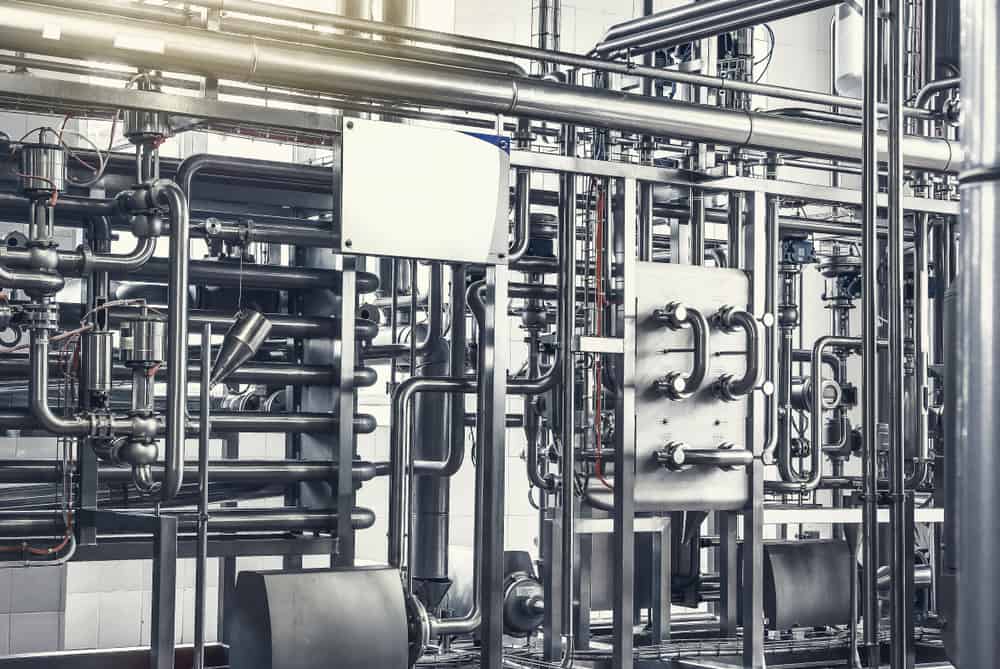
Stainless steel has firmly established itself as an industry favorite for applications that range from automotive to electrical appliances to medical equipment. Due to its strength and corrosion resistance, manufacturers prefer stainless steel for many heavy-duty applications and applications that require sanitary conditions. Despite its benefits, though, stainless steel is difficult to manipulate without disturbing its mechanical properties.
Contamination issues, harmful fumes emission, and distortion are commonly experienced when welding stainless steel. Minimizing these issues is key to optimizing the weldability of stainless steel. By applying an orbital welding process, welders and manufacturers can achieve the highest degree of stainless-steel welding efficiency.
Why Is Welding Stainless Steel Challenging?
Since the weldability of stainless steel can challenge even an experienced welder, it’s helpful for manufacturers to recognize these challenges before performing welds on the metal.
Microstructures in metal play an influential role in determining the metal’s characteristics. In stainless steel, the varying microstructures influence the metal’s classification as austenitic, ferritic, martensitic, or duplex. The weldability of these stainless steels varies according to differences in their chemical composition, lattice structure, and thermal coefficient. Welders should understand each of these stainless-steel types and their properties before commencing the welding process.
To ensure the highest quality stainless steel welding, welders must also pay attention to its surface cleaning requirement and high contamination potential. During or after welding, impurities can appear as moisture-induced-pores, heat tints, corrosion, or coarse granulation. This contamination affects the heat-affected zone and the adjacent regions, decreasing their corrosion resistivity and strength. With these impurities, the risk of contamination in sanitary application also increases. Thus, thorough weld preparation and an ideal welding process are required.
Stainless steel’s low thermal conductivity and high thermal expansion rate, which can cause distortion as the heat is applied, can present another challenge to the weldability of stainless steel. However, by carefully considering controlled heat input during welding, a welder can achieve the precise weld.
Cracks and corrosion from impurities and uncontrolled heat input can act as failure triggers. To avoid these, good decision-making in weld process selection is imperative. Orbital TIG (Tungsten Inert Gas) welding with controlled heat input can prove an ideal solution for ensuring quality and maximizing the weldability of stainless steel.
How to Maximize the Weldability of Stainless Steel
For the high-quality welding of stainless-steel components, TIG welding offers a suitable option when compared to welding processes like MIG (Metal Inert Gas), SMAW (Shielded Metal Arc Welding), or FCAW (Flux Cored Arc Welding). For stainless steel welding, TIG welding facilitates:
- Shielding gas to minimize the chances of contamination.
- Provision for controlled heat input minimizes the chances of distortion and corrosion-resistant properties in the heat-affected zone.
- A controlled and stable welding process ensures precise penetration and a narrow fusion zone.
- Elimination of the need for filler material.
The qualities of TIG welding, such as those described above, can help eliminate welding error while maximizing productivity in welding stainless steel. The high-quality weld results attained through a TIG welding process are not only strong and smooth but are also suitable for sanitary operating environments. However, further optimization is possible with the introduction of an orbital welding process.
Orbital Welding Is Ideal for Stainless Steel Welding
Orbital welding can eliminate the several risk factors that arise when welding stainless steel while enhancing and accelerating the welding process.
- With its automated process, orbital welding can enhance the speed of the otherwise slow TIG welding process.
- Auto weld heads facilitate accuracy and precision in welding while ensuring repeatability and reliability.
- A remote pendant enables operators to monitor and optimize the welding process remotely. This can also keep personnel safe from hazardous gas like hexavalent chromium, a potential by-product of welding stainless steel.
Industries are always looking for ways to enhance their productivity and maximize their yield. And with attributes like corrosion resistance and impressive strength, stainless steel offers many enhancements for manufacturers. While methods like TIG welding can minimize the challenges associated with the weldability of stainless steel, orbital welding can further simplify the process. With the weldability of stainless steel enhanced by an orbital process, manufacturers can improve their speed, quality, and productivity while significantly reducing risk.
Arc Machines, Inc. is a leading provider of high-quality and advanced welding equipment. With our orbital welding technology, the weldability of stainless steel can be enhanced to improve weld safety and precision while maximizing productivity. For inquiries regarding products, contact sales@arcmachines.com. Arc Machines welcomes the opportunity to discuss your specific needs. Contact us to arrange a meeting.




